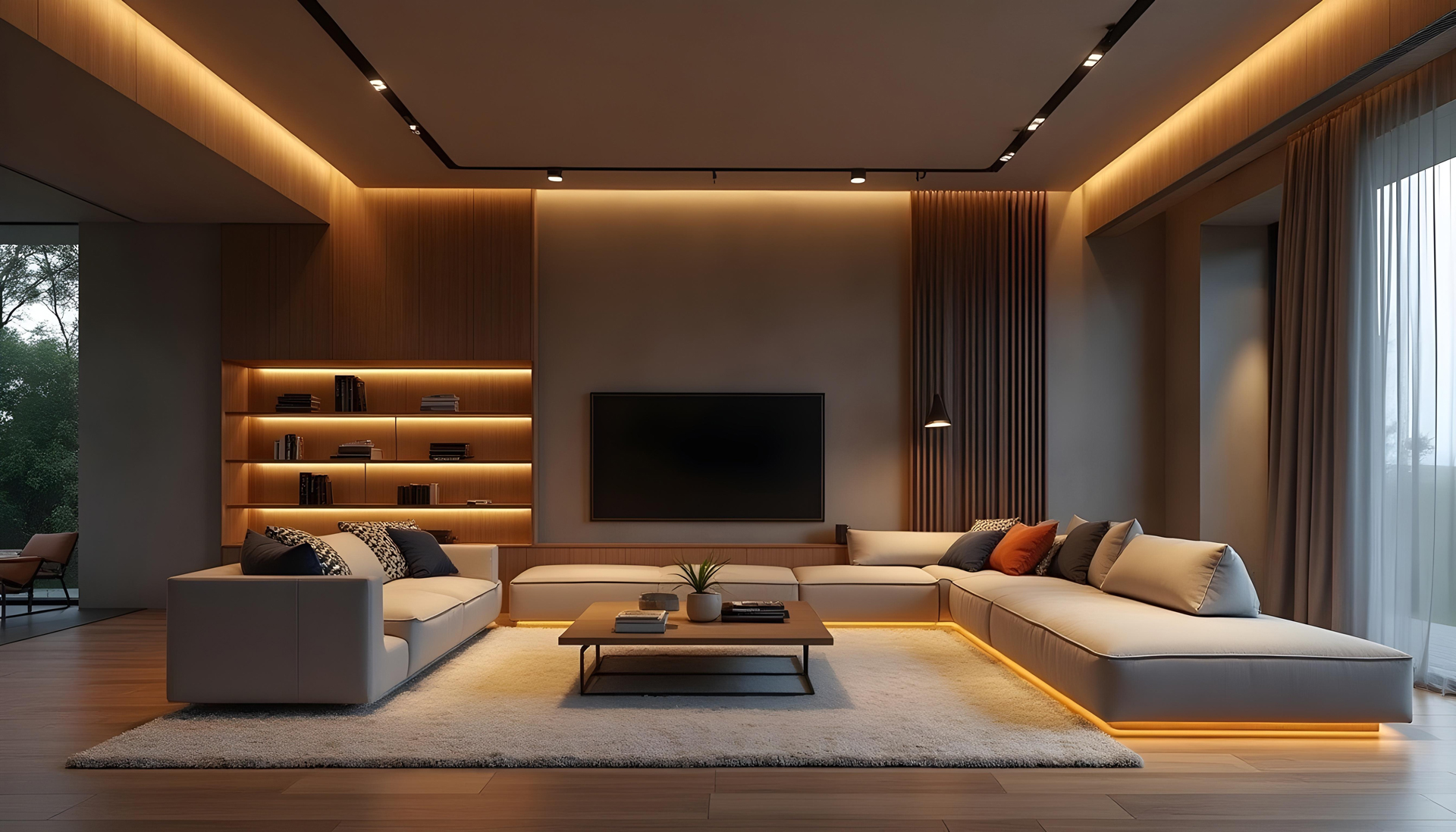How important is lighting in interior design?
How important is lighting in interior design?
Lighting is as important as every other element of the design. Good lighting changes and transforms a space. We use light and shade to make a room feel comfortable but also dramatic and atmospheric. Let’s say we want to highlight an artwork on a wall, we need a downlight to hit the artwork but in combination with a darker area around – this then draws our eye to the painting.
Our skill is artfully combining downlights, uplights, wall lights, floor lights, hidden lights, feature lights, integrated architectural lighting, pendants and lamps to add vast interest and depth to each room. We apply different strategies for different solutions. We may illuminate special features such as an occasional table with flowers using Polespring downlight with a narrow beam, but we combine it with more general highlighting options. Lighting a beautiful curtain fabric will be done in a different way to creating targeted bright areas for tasks such as cooking, reading, or working at a desk.
What impact does daylight have in interior design?
Daylight is a crucial factor for all designers. Interior designers and lighting designers will monitor how daylight enters each space they work on – it will affect where everything is positioned. It’s as important as artificial light. In a living space with expansive glazing, daylight will pour in making it feel bright and open. So then we think how to handle the artificial light – and offer different options throughout the day. A grey afternoon in London looks very different to a bright sunny morning in Dubai and will require different lighting.
Architectural lights still play a role where there’s daylight. Use it to brighten dark spots in shelving, add brilliance to a task area or to highlight artworks.
LED linear strips will bring a warmth to joinery and key features in your room and may be needed with the natural light to add focus and softness. The key solution is to manage lighting options for different times of day using a combination of daylight and artificial light. We can have pre-set options on a switch pad to achieve the optimum results.

What impact does artificial light have in interior design?
Artificial light creates visual stimulation – we’re always drawn to the brightest point in a room, so we use artificial light to accentuate specific features in the space. In a kitchen, these might be flowers on a kitchen island or dining table which we’ll highlight. We will also bring focus to the room’s edges to broaden the perspective. We may add subtle light to vertical surfaces such as cupboards using perimeter lights, which will create reflected light off those surfaces.
Getting the functional task lighting right, to prepare a meal, make a drink, or simply see what’s inside the cupboards, is vital, too. Diffuse light is used for general warmth. A well-designed varied artificial lighting scheme will add brightness, moments of drama, layers and depth.
Aadh Lights
Office
- Perinjanam, Thrissur, Kerala, India - 680686
- info@aadhlights.com
- +91 95267 17771
